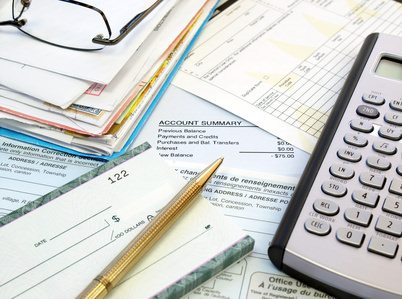If you want to keep more of your money, you need to learn how to set up and stick to a budget. Becoming more aware of where your money is going helps you make better choices about how to spend it. Budgeting does not have to be complicated; you just need to learn some simple techniques so that you can begin making changes.
Simple Ways to Make a Budget
 The simplest way to budget is to keep track of your expenses and income on your computer or smartphone. There are lots of programs you can use to help you keep track of what you’re earning and what you’re spending. These programs automatically download transactions from your bank accounts and categorize them for you. You just have to go through and make sure all your expenses are in the correct category.
The simplest way to budget is to keep track of your expenses and income on your computer or smartphone. There are lots of programs you can use to help you keep track of what you’re earning and what you’re spending. These programs automatically download transactions from your bank accounts and categorize them for you. You just have to go through and make sure all your expenses are in the correct category.
Once you have been using this kind of program for a couple of weeks, you can look over your expenses and see what you can cut. Look at entertainment and dining out before anything else; these two categories often drain money that could be used better elsewhere.
You also need to learn how to prioritize your expenses. Essential expenses should always come before non-essential expenses if you have limited funds. Essential expenses include rent, utilities, food and your payments to yourself. Some of these expenses are large, so you may have to save money from each paycheck for them. For example, rent and utilities may take you all month to save for.
Don’t skimp on paying yourself, however. It’s important that you put a small amount of money aside for yourself out of each paycheck so that you stay motivated and keep working on your financial plan. Set aside anywhere from $5 to $25 for yourself out of each check; you can either put this into a savings accounts for a bigger reward or spend it on a small present for yourself.
Make Sure Your Financial Budget Will Succeed
Categorizing your expenses is important; make sure that your budget plan allows you to do this. By categorizing, you can see how much of your money is going to essential expenses, as opposed to unessential expenses. You can check how much you’re spending on utilities versus how much you are spending on going to the movies, for example. This helps you figure out which expenses to cut first if you need to cut expenses.
In addition, categorizing your expenses makes it much less overwhelming to look at how much you’re spending. If you don’t categorize, you may have a lump sum of $3,000 in expenses and not know where to begin to cut. If you categorize, however, you can easily see that $400 worth of restaurant expenses is excessive.
It’s not easy to make financial changes to your life, but setting up a budget can help make this momentous task a lot easier. A budget isn’t something you do once and forget; it’s a living, breathing document that you change as your financial situation changes. If you follow the tips above, it can help you build your first budget so that you can begin the process of resolving financial problems.
